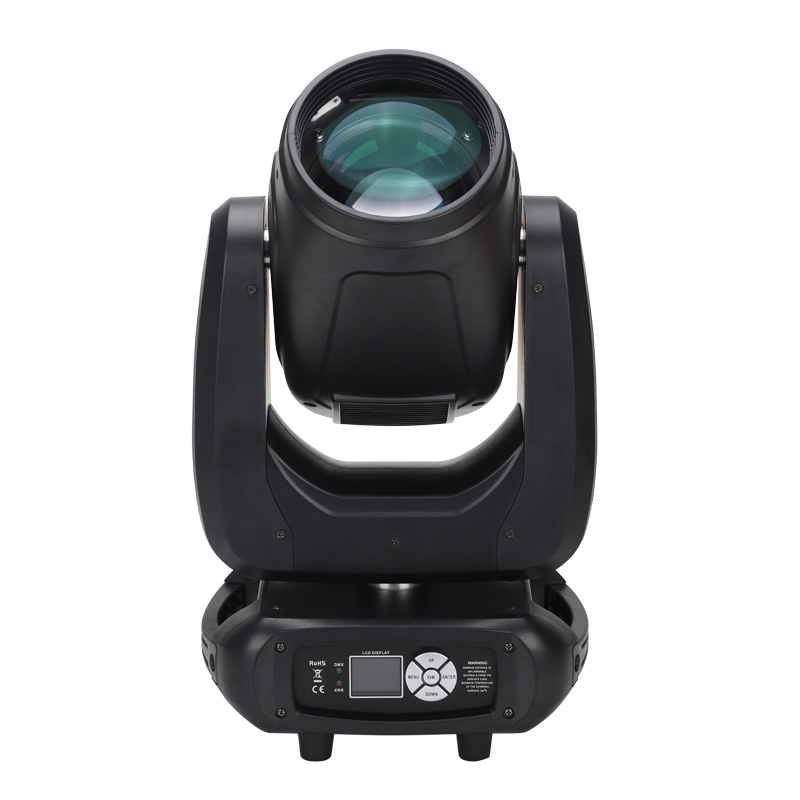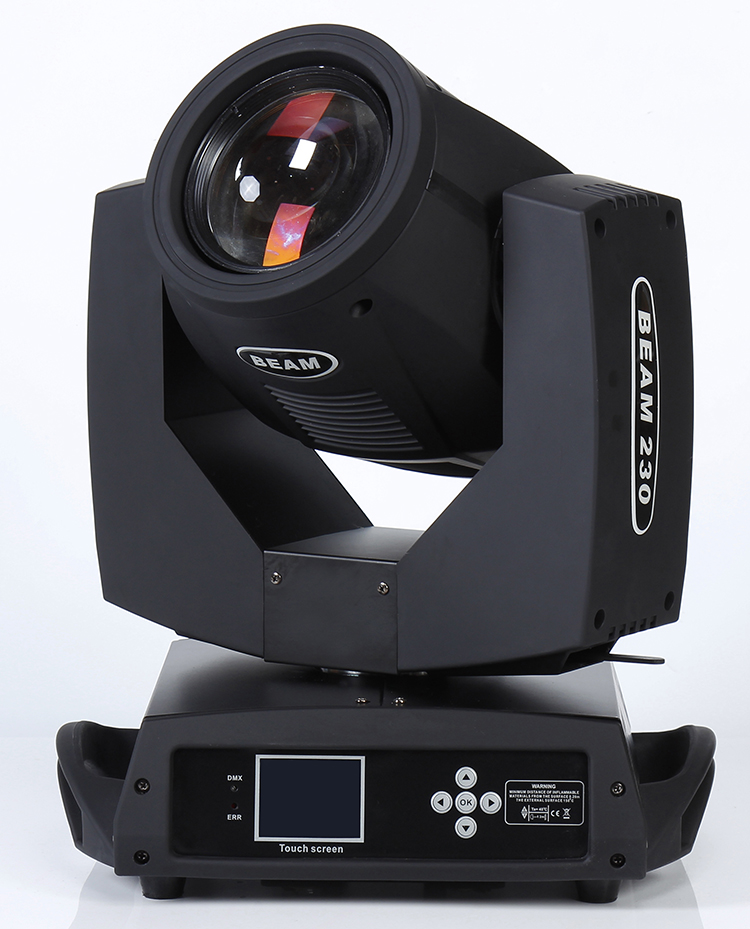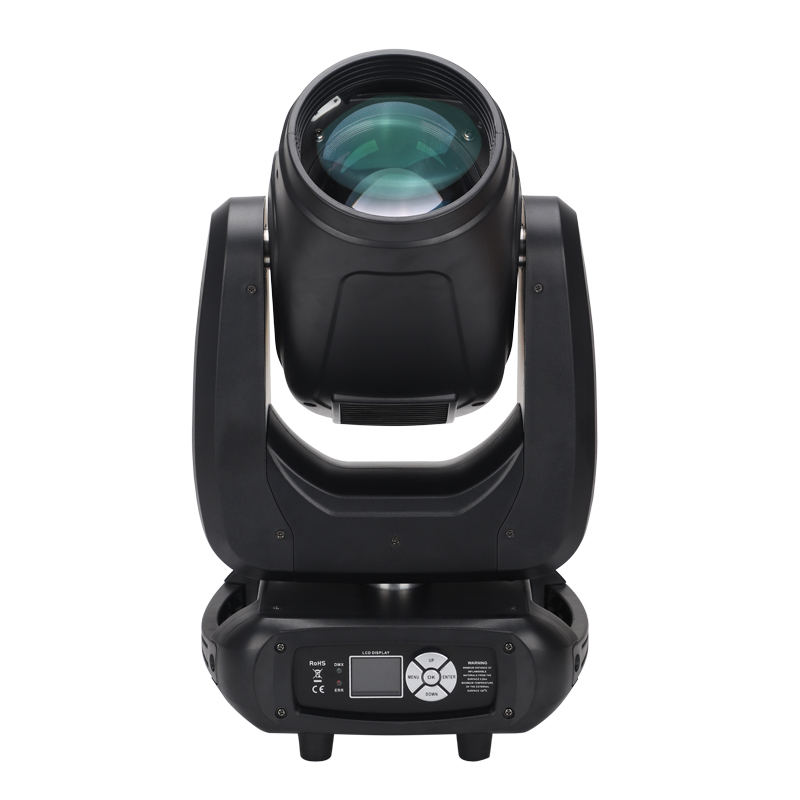Pan and tilt speed is a critical metric for evaluating the responsiveness and performance of moving head lights. Whether for live concerts, theatrical shows, or club installations, fixtures that offer fast and accurate positioning provide lighting designers with greater creative freedom. This article compares the 295W Moving Head Beam Light and the 230W 7R Beam Moving Head Light, examining how each handles motion control and dynamic scene changes.
1. The Importance of Pan/Tilt Speed
In live production, time is everything. The ability of a fixture to quickly change position and orientation—without stutter, overshoot, or noise—is essential for:
Following fast-moving performers
Syncing lighting cues with beats
Executing rapid effect sweeps
Delivering immersive audience experiences
Fast pan/tilt response translates to tight, professional scenes that flow smoothly with the narrative or rhythm.
2. Fixture Overview: 295W Moving Head Beam Light
The 295W Moving Head Beam Light is designed for high-output, high-precision stage applications. This fixture combines strong beam intensity with motorized positioning optimized for speed.
Key Motion Specs:
Pan Range: 540°
Tilt Range: 270°
Positioning System: High-precision stepper motors
Control: 16-bit resolution for both Pan and Tilt
In a live setting, the 295W Moving Head Beam Light excels in back-to-back effect transitions, spotlight tracking, and motion-based chase scenes. Its consistent speed and minimal latency make it a top-tier option for professional productions.

3. Fixture Overview: 230W 7R Beam Moving Head Light
The 230W 7R Beam Moving Head Light is a compact yet powerful unit known for quick movement and sharp beam definition. Despite its lower wattage, it holds up well under speed-based scrutiny.
Key Motion Specs:
Pan Range: 540°
Tilt Range: 270°
Motion Control: Stepper motor with microstep driver
Application: Small to medium-sized venues, touring rigs
The 230W 7R Beam Moving Head Light provides fast action at a lower cost, making it ideal for mobile DJs, clubs, and event rental services.

4. Speed Comparison in Real-World Scenarios
To assess real-world performance, let’s compare both fixtures under common lighting cues:
| Motion Cue | 295W Moving Head Beam Light | 230W 7R Beam Moving Head Light |
|---|---|---|
| 180° Pan Swipe | ~1.3 seconds | ~1.6 seconds |
| 90° Tilt Snap | ~0.9 seconds | ~1.1 seconds |
| Full Pan/Tilt Loop | Smooth & linear | Noticeable ramp-up |
| Synchronization in Chase | Excellent | Moderate |
These differences become more apparent in high-speed scenes like strobe sweeps or quick performer tracking, where the 295W Moving Head Beam Light consistently outpaces its 230W counterpart.
5. Programming Considerations
Lighting programmers should adapt movement curves and timing to match fixture responsiveness. For example:
Use slower fade-in/out curves with the 230W 7R Beam Moving Head Light to mask slight lag.
Create mirror and reverse pan motions with the 295W Moving Head Beam Light for visual drama.
Assign motion-intensive sequences (e.g., figure 8 or wave patterns) to the 295W Moving Head Beam Light, while using the 230W 7R Beam Moving Head Light for static or rotating gobos.
6. Ideal Use Cases by Fixture Type
Each fixture offers advantages depending on venue size, programming needs, and budget:
| Use Case | Recommended Fixture |
|---|---|
| Arena Concerts | 295W Moving Head Beam Light |
| Medium-Sized Theaters | 230W 7R Beam Moving Head Light |
| EDM Festivals | 295W Moving Head Beam Light |
| Club Installations | 230W 7R Beam Moving Head Light |
| Touring Light Shows | Both, depending on rig design |
7. Final Verdict
For maximum speed, precision, and fluidity, the 295W Moving Head Beam Light leads the comparison, especially in fast-paced productions. However, the 230W 7R Beam Moving Head Light offers impressive performance in a compact and budget-conscious package. Lighting designers can combine both to form a dynamic and versatile moving head system.
READ MORE:





Blue Sea Lighting is an enterprise with rich experience in the integration of industry and trade in stage lighting and stage special effects related equipment. Its products include moving head lights, par lights, wall washer lights, logo gobo projector lights, power distributor, stage effects such as electronic fireworks machines, snow machines, smoke bubble machines, and related accessories such as light clamps.
Quick Links
For more questions subscribe to our email









